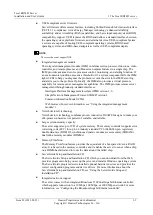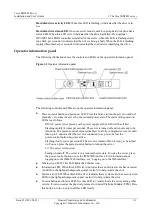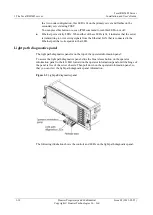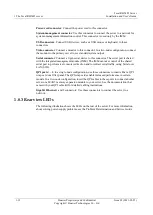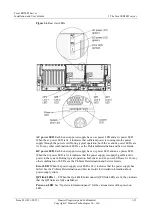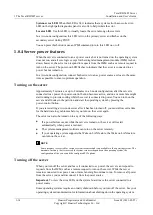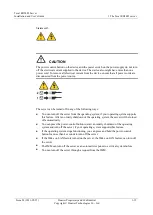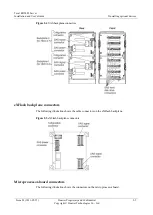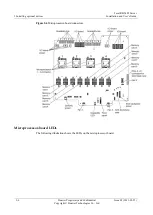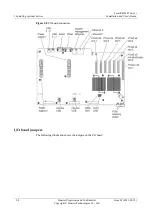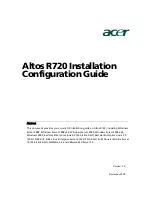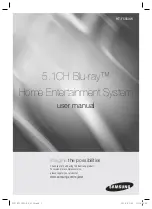
Tecal RH5485 Server
Installation and User’s Guide
1 The Tecal RH5485 server
Issue 02 (2011-05-25)
Huawei Proprietary and Confidential
Copyright © Huawei Technologies Co., Ltd
1-9
Hard disk drive activity LED
: When this LED is flashing, it indicates that the drive is in
use.
Hard disk drive status LED
: On some server models, each hot-swap hard disk drive has a
status LED. When this LED is lit, it indicates that the drive has failed. If an optional
HUAWEI ServeRAID controller is installed in the server, when this LED is flashing slowly
(one flash per second), it indicates that the drive is being rebuilt. When the LED is flashing
rapidly (three flashes per second), it indicates that the controller is identifying the drive.
Operator information panel
The following illustration shows the controls and LEDs on the operator information panel.
Figure 1-2
Operator information panel
The following controls and LEDs are on the operator information panel:
Power-control button and power-on LED: Press this button to turn the server on and off
manually or to wake the server from a reduced-power state. The states of the power-on
LED are as follows:
−
Off: AC power is not present, or the power supply or the LED itself has failed.
−
Flashing rapidly (4 times per second): The server is turned off and is not ready to be
turned on. The power-control button is disabled. In a fully configured server, it could
take up to 8 minutes after the server is connected to ac power, before the
power-control button becomes active.
−
Flashing slowly (once per second): The server is turned off and is ready to be turned
on. You can press the power-control button to turn on the server.
−
Lit: The server is turned on.
−
Fading on and off: The server is in a reduced-power state. To wake the server, press
the power-control button or use the IMM Web interface. For information about
logging on to the IMM Web interface, see “Logging on to the Web interface” .
Ethernet icon LED: This LED lights the Ethernet icon.
Information LED: When this LED is lit, it indicates that a noncritical event has occurred.
An LED on the light path diagnostics panel is also lit to help isolate the error.
System-error LED: When this LED is lit, it indicates that a system error has occurred. An
LED on the light path diagnostics panel is also lit to help isolate the error.
Locator button and locator LED: Use this LED to visually locate the server among other
servers. It is also used as the physical presence for trusted Platform Module (TPM). Press
this button to turn on or turn off this LED locally.











